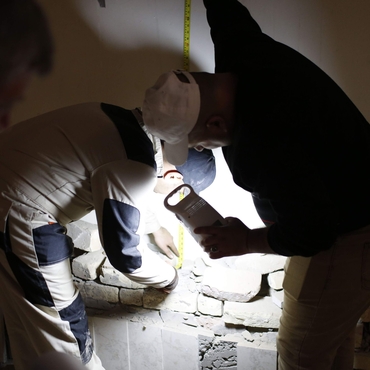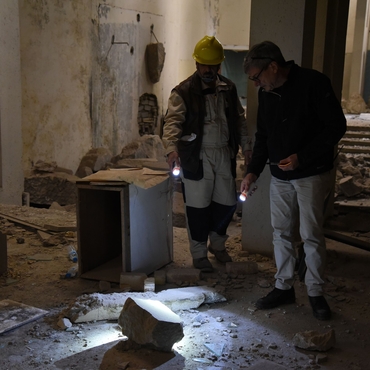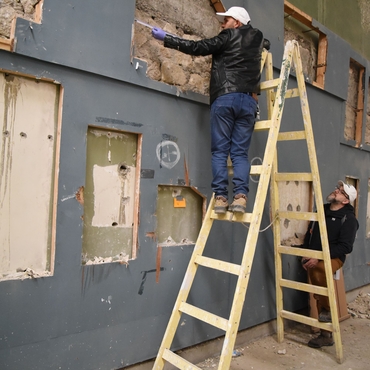
- Home
- Rehabilitating the Mosul Cultural Museum
- The First Steps of the Project
A complete inventory
Following the decision by the International alliance for the protection of heritage in conflict areas (ALIPH) to fund an ambitious project to rehabilitate the Mosul Cultural Museum, the first job was to establish the condition of the building and the museum's collections.
In 2018 and 2019, the Musée du Louvre and the Smithsonian Institution (SI) began work to draw up a precise inventory of the Mosul Cultural Museum — along with the help of the Mosul Cultural Museum and the National Museum of Iraq in Baghdad under the aegis of the State Board of Antiquities and Heritage (SBAH) in the Iraqi Ministry of Culture, Tourism and Antiquities. The building and the collections that remained were documented in detail, like a crime scene. The precise data gathered could then be put to better use, particularly in restoring the monumental remains left scattered after the explosions.
Emergency measures
At the same time, emergency measures were quickly put in place to support and secure the building and the collections. These included clearing the building of mines, rebuilding the fences, reinforcing the gaping hole in the middle of the Assyrian Hall and securing objects in dangerous situations. For example, one monumental fragment lay on the edge of the chasm, and another hung by only a remnant of the original attachment, in danger of giving way. At this early stage, some of the surviving works and fragments were sorted, cleaned, documented and packed in the museum.
Associated media
Open Media Library

Zaid Ghazi Saadallah, director of the Mosul Cultural Museum (right), and Saad Ahmed, deputy director (left), February 2019

Zaid Ghazi Saadallah, director of the Mosul Cultural Museum (left), and Kent Severson, conservator (right), February 2019

Study in progress at the Mosul Cultural Museum, April 2019

Work in the museum basement, April 2019
